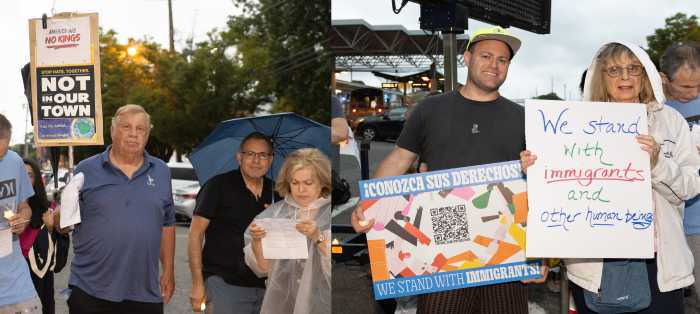
Author details the president’s final visit to Long Island
Local resident Dr. Joanne Grasso investigates an overlooked event in post-Revolutionary history in her new book, George Washington’s 1790 Grand Tour of Long Island, which is based on the first president’s personal journal. According to the author, one of her motivations for writing was lack of awareness of Long Island’s role during the early years of the nation.
“One of the issues with Long Island is our proximity to New York City and that it is most focused on whether it’s politics, cultural or anything like that,” Grasso said. “A lot of people think that Long Island was just placid or peaceful during the Revolutionary War because we were occupied (by the British) and that is absolutely not the case.”
Grasso, who teaches Americanist studies at an area college, notes she had a very “narrow idea” of Long Island’s part in the Revolutionary War, despite her early fascination with the revolution. That admiration for the era is rooted in Grasso’s heritage with ancestrial connections to the Revolutionary War and growing up in Great Neck, which would have been battleground area.
“I grew up on the North Shore in what would have been considered patriot country at the time during the American Revolution,” Grasso said. “[My father’s side] came over as part of the first generation of that family in the American Revolution. My mother’s side has a whole legacy of all kinds of people from that generation that fought in the Revolution or contributed to it.”
Grasso’s lineage motivated her to continue their legacy by applying for membership with a local chapter of the Daughters of the American Revolution (DAR) where she eventually served as president. The organization helped solidify her personal values through informing younger generations about the importance of history, service to those who have fought for the United States, and work to keep historical societies alive.
“The DAR has three principles of education, patriotism, and historic preservation,” she said. “Oftentimes, they overlap…we’re instilling values in a younger generation for patriotism; my dad was a World War II veteran and he deeply instilled in me the love of country and support of our government and both my parents and the organization taught me preserving historic sites preserves that generation and its sacrifices.”
It is Washington’s personal appreciation of Revolutionary-era Long Islanders that Grasso believes should motivate locals to discover why Long Island thrives today. She reminds her students they cannot forget the reality of history and that the classroom can only do so much which is a lesson she wants to push on readers.
“History is just books unless you go out and see it and it’s very easy to go out and see it here and to really fall in love with it, with the local historic sites that are still in tact and other people that have a love of history that keep it going,” she said. “Historic figures are not just from some ficticious story we’re studying; they are real people that built the foundation of this country and allowed for future generations of this country to move, change and work on problems.”

































